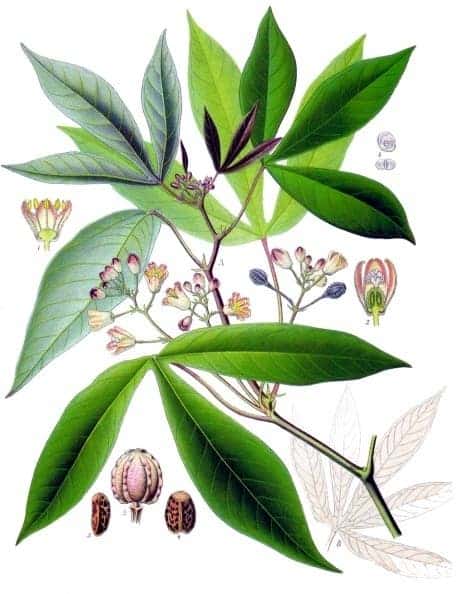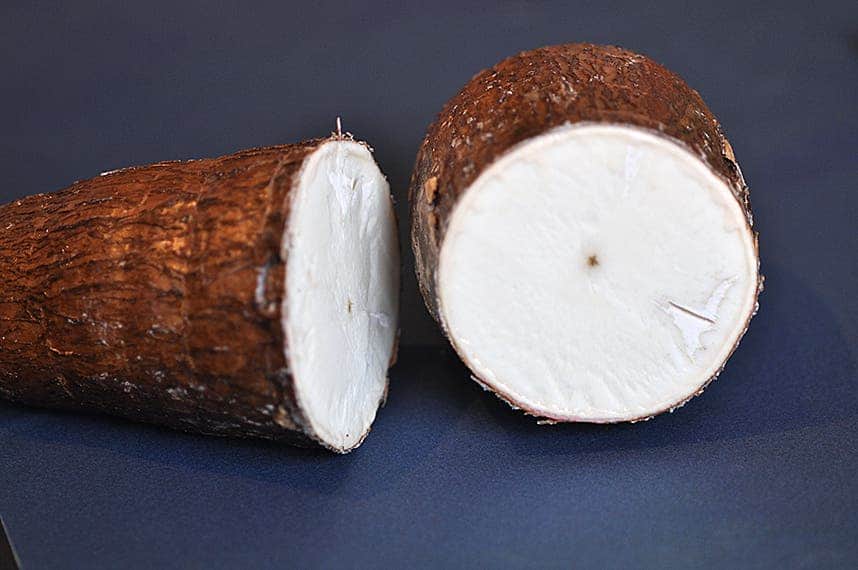With so many people worried about AI rebelling against mankind, it’s time to look at the positive — and sometimes unexpected — benefits it can bring. In a new advancement, scientists developed an algorithm that can identify sick plants based on sight alone.

Manihot esculenta, commonly known as the cassava plant, is the most widely grown root crop on Earth. It’s often dried into a powder called tapioca. Cassava is very important for many people, and seeing when it is and isn’t doing okay could make a huge difference for millions. This is where AI steps in. Researchers have developed a smartphone-based program that can tell when cassava is doing fine and when it isn’t. The best thing about it? The algorithm is so simple that it works on a smartphone.
I say simple, but really, I mean relatively simple. It’s simple enough to run on a regular smartphone, without any cloud computing or other fancy technology, but the algorithm is still complex. It’s built on Google’s open source machine learning library, TensorFlow.
“Some neural networks require hundreds of millions of parameters, and just the file size you would need to store those is beyond what you could include in an app,” says Google’s Pete Warden, tech lead on TensorFlow Mobile. “This network only has around 25 million.”
“It only requires—I say only—but it only requires about 11 billion floating point operations to actually calculate its result,” Warden adds, “and some other networks require hundreds of billions of operations to do a similar job.”
Whenever you have an algorithm like this, you have to input a lot of information — especially images. The straightforward method of doing this is by feeding millions and millions of diseased cassava leaves and teaching the program to identify them. The problem is that this takes a really long time, a lot of memory, and no one has that many photos of diseased cassavas. So researchers went for a different method, called transfer learning.

Transfer learning is an inductive technique in machine learning that focuses on storing knowledge gained while solving a different but related problem.
“Happily, it turns out that networks trained to recognize certain kinds of objects can actually be taught to recognize other things with a lot less data, and that’s really the idea behind transfer learning,” says Warden.
By using transfer learning, you can get away with a much smaller data input, but you need that data to be high-quality.
“It really comes down to the data, because garbage in, garbage out,” says Penn State agricultural engineer Amanda Ramcharan, lead author on the study. “So you want to have really clean, high-quality data sets.”
So through this approach, they used just 2,756 images of cassava leaves, teaching the program to recognize cassava brown streak disease and cassava mosaic disease, plus any damage done by mites. The resulting accuracy was impressive; the AI identified brown leaf spots with 98 percent accuracy and red mites at an accuracy of 96 percent.
In an age where agriculture is becoming more and more technology-intensive, this technique could enable farmers to detect plant problems faster and more accurately. Sure, an experienced farmer might be able to see the same thing, but then again he might not. He could miss it, or the cues may be too subtle for the human eye. The whole thing could be built into an app and be used even without internet access.
“With globalization, the spread of pests and pathogens is increasing rapidly,” says Ramcharan. “So having tools that you can deploy quickly can be really beneficial and really help with food security.”
Furthermore, the same technique could be applied to a larger variety of crops, and be tailored to use different AIs for different areas of the globe and thus help ensure food security in places where it’s direly needed. Cassava is the third largest source of carbohydrates for human food in the world, but is vulnerable to viral diseases, which threaten to destabilize food security in sub-Saharan Africa.
“In the same way we have personalized medicine, I think we can have personalized agriculture on scale for hundreds of millions of people in real time,” concludes study co-author David Hughes, a biologist at Penn State.
Journal Reference: Amanda Ramcharan, Kelsee Baranowski, Peter McClowsky, Babuali Ahmed, James Legg, David Hughes. Using Transfer Learning for Image-Based Cassava Disease Detection.


